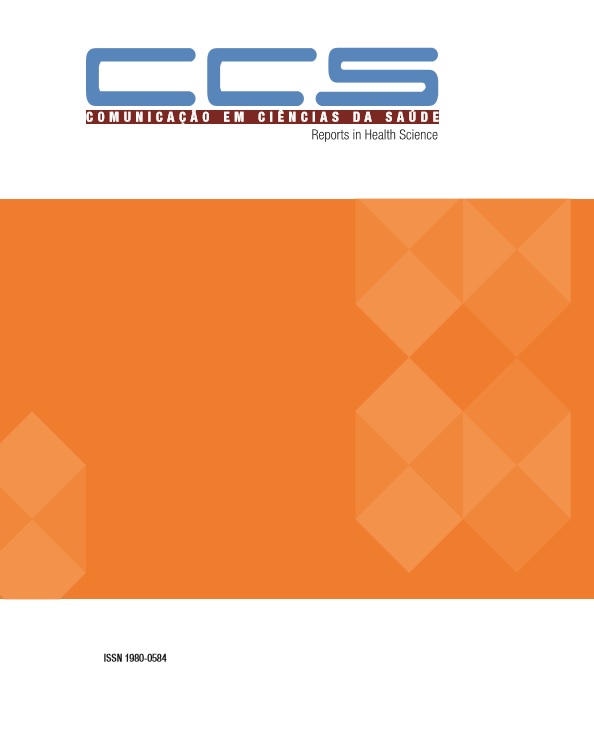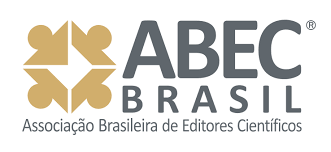Nutritional profile and dietary intake of children allergic to cow’s milk protein accompanied by a children’s hospital, in Brasilia, Brazil
DOI:
https://doi.org/10.51723/ccs.v28i03/04.282Keywords:
Unspecified allergy, Hypersensitivity to milk, Nutritional assessment, Anthropometry and dietary inquiryAbstract
Objective: Investigate the nutritional status and dietary intake of children with allergy to cow ‘s milk protein of up to three years of age accompanied by a children’s hospital, in Brasilia, Brazil.
Methods: This is a descriptive cross-sectional and prospective study. Weight and height of children were measured to determine nutritional status through z-score of WHO’s curves. The characterization and consumption of infant formulas specific to CMPA were collected through questionnaire and 24h recall. There contribution of protein-calorie, calcium, vitamin D and essential fatty acids in relation to the DRIs was verrified.
Results: 76.5% were term newborns, with cesarean section (73.5%) and with adequate birth weight (85.3%). E / I (91.2%), P / I (88.3%), P / E (88.2%) and BMI / I (85.3%) were found to be adequate. 17.6% of the sample had EMA up to 6 months and 94.1% of the children were not breastfed. The mean age of introduction of complementary feeding was 5.16 ± 1.47 months and 54.5% received complementary feeding before 6 months. The percentage of children who transgressed the diet was 11.8%. The widely hydrolyzed formula was the most used (64.7%) and 5.9% did not receive infant formula. The mean contribution percentages of infant formulas in relation to DRIs were: 45.72% (EER), 80.21% (protein), 76.9% (calcium), 176.64% (vitamin D), 34.77 % (w3) and 24.87% (w6).
Conclusion: The results of this study indicate that weaning and introduction of complementary foods was early in this sample. Infant formulas used were specific for CMPA and contributed to achieve the nutritional recommendations for age. The results suggest that the prescribed formulas contribute to adequate nutritional status of these children. The continuing education of the population, nutritional counseling and dairy products diet free are necessary to avoid the negative impact of CMPA in children.
Downloads
References
2. Dias A, Santos A, Pinheiro JA. Persistence of cow’s milk allergy beyond two years of age. Allergol Immunopathol (Madr). 2010; 38(1):8-12.
3. Benhamou AH, Schappi Tempia MG, Belli DC, Eeigenmann PA. An overview of cow’s milk allergy in children. Swiss Med Wkly. 2009; 139(21-22):300-7.
4. Vieira MC, Morais MB, Spolidoro JVN, Toporovski MS, Cardoso AL, Araujo GTB et al. A survey on clinical presentation and nutritional status of infants with suspected cow’s milk allergy. BMC Pediatrics 2010,10:25.
5. Caetano M C, Ortiz TT, Silva SGL, Souza FIS, Sarni ROS. Alimentação complementar: práticas inadequadas em lactentes. J. Pediatr. (Rio J). 2010; 86(3):196-201.
6. Costa EG, Silva SPO, Lucena JRM, Filho MB, Lira PIC et al. Consumo alimentar de crianças em municípios de baixo índice de desenvolvimento humano no Nordeste do Brasil. Rev. Nutr., Campinas, v. 24, n. 3, June 2011.
7. Van Odik J, Kull I, Borres MP, Brandtzaeg P, Edberg U, Hanson LA et al. Breastfeeding and allergic disease: a multidisciplinary review of the literature (1966-2001) on the mode of early feeding in infancy and its impact on later atopic manifestations. Allergy, [S.l.], v. 58, p. 833-43, 2003.
8. Monte C Giugliane, ERJ. Recomendações para alimentação complementar da criança em aleitamento materno. Jornal de pediatria, [S.l.], v. 80, p. S131-S141, 2004.
9. Agostoni C, Braegger C, Decsi T, Kolacek S, Koletzko B, Michaelsen KF, et al. Breast-feeding: A commentary by the ESPGHAN Committee on Nutrition. J Pediatr Gastroenterol Nutr. 2009; 49(1):112-25.
10. Veira GO, Silva LR, Vieira TO, Almeida JAG, Cabral VA. Hábitos alimentares de crianças menores de 1 ano amamentadas e não-amamentadas. J. pediatria (Rio J). 2004; 80: 411-6.
11. Sampson HA. Uptade on food allergy. J allergy clin immunol 2004; 113:805-19.
12. Fiocchi A, Brozek J, Schünemann H, Bahna SL, von Berg A, Beyer K, Bozzola M, et al. World Allergy Organization (WAO) diagnosis and rationale for action against cow’s milk allergy (DRACMA) guidelines. WAO journal, april, 2010. P. 57-161.
13. Ramesh S. Food allergy overview in children. Clin Rev Allergy Immunol. 2008; 34(2):217-30
14. Pereir PB, Pereira CS. Alergia à proteína do leite de vaca em crianças: repercussão da dieta de exclusão e dieta substitutiva sobre o estado nutricional. Pediatria, São Paulo, 30(2): 100-106, 2008.
15. Agostoni C, Decsi T, Fewtrell M, Goulet O, Kolacek S, Koletzko B, Michaelsen KF, et al. Complementary feeding: a commmentary by the ESPGHAN Committee on Nutrition. J Pediatr Gastroenterol Nutr. 2008; 46:99-110.
16. Sociedade Brasileira de Pediatria; Associação Brasileira de Alergia e Imunologia (Brasil). Consesnso Brasileiro sobre Alergia Alimentar: 2007. Rev. Brasileira alerg. Imunopatol., vol. 31, nº2, 2008.
17. Saarinen VM, Kajosaari M. Breast Feeding as prophylaxis against atopic disease: prospective follow up until 17 years old. Lancet 1995; 346:1065-9.
18. Bortolini GA, Vitolo MR, Gubert MB, Santos LMP. Consumo precoce de leite de vaca entre crianças brasileiras: resultados de uma pesquisa nacional. J Pediatr (Rio J). 2013; 89 (6): 608-613.
19. Sova C, Feuling MB, Gleason L et al. Systematic review of nutrient intake and growth in children with multiple IgE-mediated food allergies. Nutrition in clinical practice. 2013; 28 (6): 669-675.
20. Koletzko S, Niggemann B, Arato A, Dias JA, Heuschkel R, Husby S et al. Diagnostic approach and management of cow’s milk protein allergy in infants and children: A practical guideline of the GI-committee of ESPGHAN. Journal of pediatric gastroenterology and nutrition, 2012. 33p.
21. Zeiger, RS. Dietary Aspects of Food Allergy Prevention in infants and children. J Pediatr Gastroenterol Nut 2000; 30:S77-86.
22. Christie L, Hine RJ, Parker JG, Burks W. Food allergies in children affect nutrient intake and growth. Journal of the American Dietetic Associantion, vol. 102, n. 11, November, 2002.
23. Sicherer SH, Noone AS, Koerner CB et al. Hypoallergenicity and efficacy of an amino acid-based formula in children with cow’s milk and multiple food hypersensitivities. J Pediatr. 2001; 138: 688-693.
24. Aldámiz-Echevarría L, Bilbao A, Andrade F et al. Fatty acid deficiency profile in children with food allergy managed with elimination diets. Acta pediatrica. 2008; 97: 1572-1576.
25. Slater B, Marchioni DL, Fisberg RM. Estimando a prevalência da ingestão inadequada de nutrientes. Rev Saúde Pública, 2004; 38 (4): 599-605.
Downloads
Published
Issue
Section
License
Declaro para os devidos fins que o artigo que estou submetendo representa um trabalho original e nunca foi publicado total ou parcialmente, e que se alguma de suas partes foi publicada possuímos autorização expressa para a publicação no periódico Comunicação em Ciências da Saúde (CCS). Esse artigo não foi enviado a outro periódico e não o será enquanto estiver sendo considerada sua publicação; caso venha a ser aceito não será publicado em outro periódico; e não contém material difamatório ou ilegal sob nenhuma forma, não viola a intimidade de terceiros, nem infringe direitos protegidos.
Eu e demais autores desse trabalho certificamos por meio desta declaração que:
- Concordamos com as normas editoriais e com o processo de revisão da CCS;
- Aceitamos a responsabilidade pela conduta desse estudo e pela análise e interpretação dos dados;
- Cooperaremos, sempre que solicitado, na obtenção e fornecimento de dados sobre os quais o manuscrito está baseado, para exame dos avaliadores;
- Não estão sendo omitidos quaisquer ligações ou acordos de financiamento entre os autores e companhias ou pessoas que possam ter interesse no material abordado no artigo;
- Não estão sendo excluídos ou omitidos deste artigo autores ou instituições participantes;
- Possuímos permissão para uso de figuras e tabelas publicadas em outras fontes;
- Possuímos permissão das pessoas e instituições citadas nos agradecimentos;
- O autor correspondente autoriza a publicação do endereço informado e e-mail do(s) autor(es) junto com o artigo;
- Assumimos a responsabilidade pela entrega de documentos verídicos;
- Autorizamos a publicação do referido artigo no periódico Comunicação em Ciências da Saúde, segundo critérios próprios e em número e volume a serem definidos pelo editor do periódico;
- Nos comprometemos a atender os prazos estipulados pelos editores do periódico Comunicação em Ciências da saúde;
- Estamos cientes de que a não manifestação no prazo de dois dias da revisão da diagramação, recebida por e-mail, será considerado aprovado para publicação.








